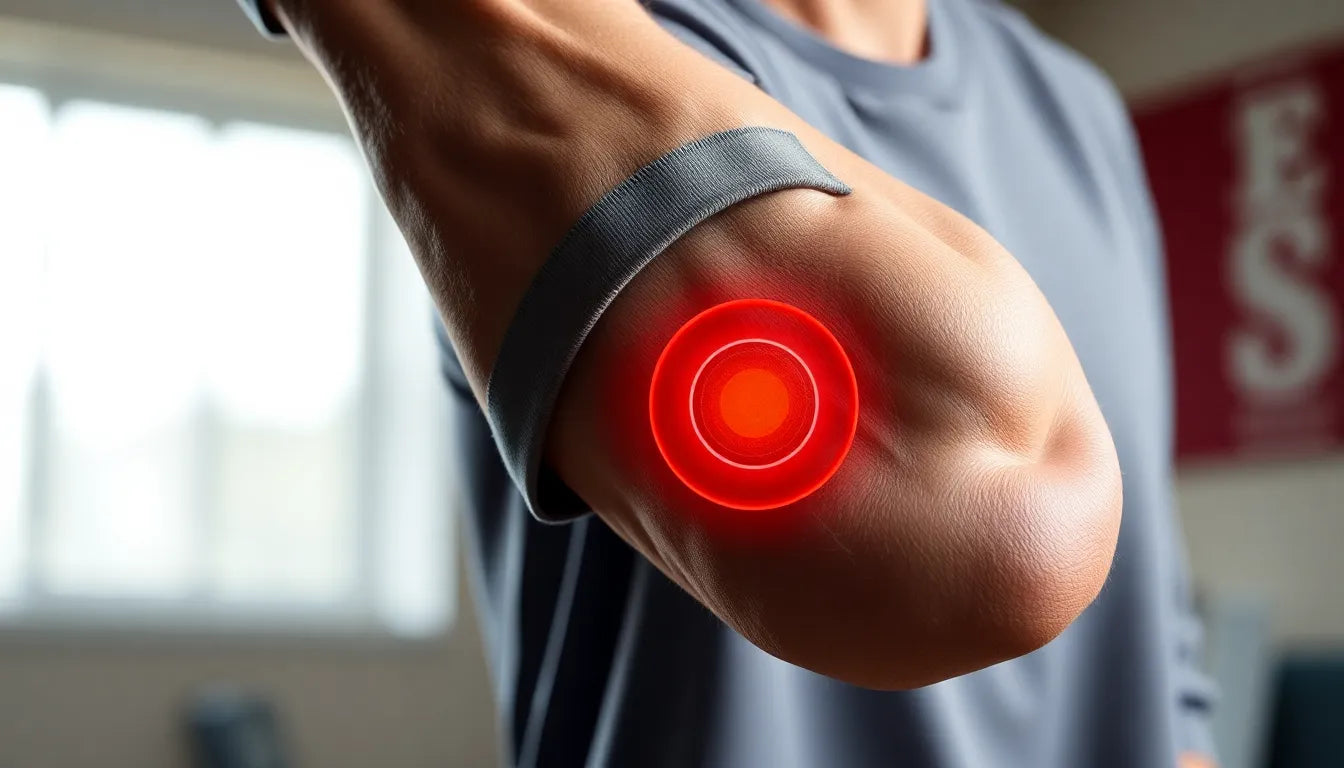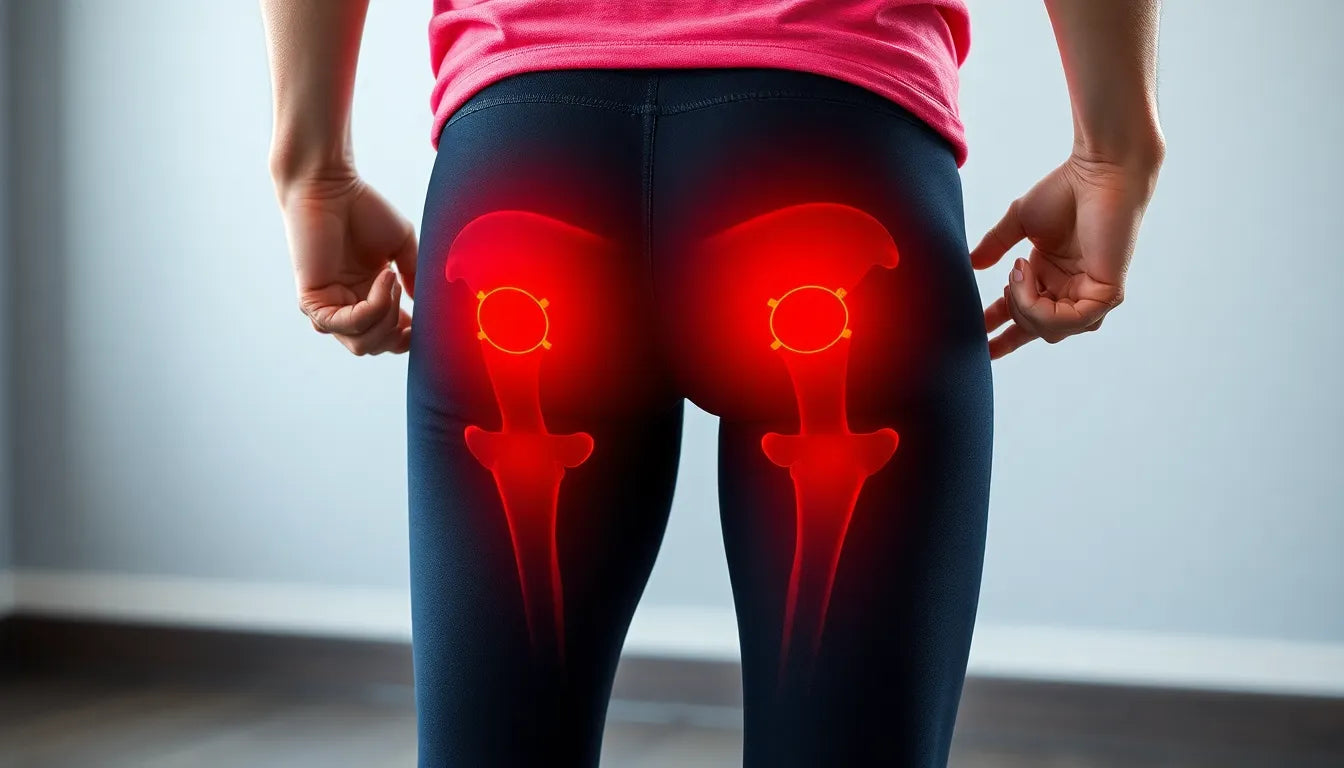Experiencing pain on the outer side of the thigh can be a common issue, often affecting daily activities and diminishing overall quality of life. This type of discomfort may stem from various causes, including muscle strain, overuse, or even nerve compression. Regardless of the origin, the impact can be significant, making it challenging to engage in routine tasks such as walking, sitting, or standing for extended periods.
Addressing this pain effectively involves understanding its root causes and implementing strategies to alleviate it. One of the most effective approaches is through targeted exercises designed to manage and reduce pain on the outer thigh. Not only do these exercises help in alleviating existing discomfort, but they also play a crucial role in preventing future occurrences by strengthening the muscles and improving overall stability.
The Importance of Exercise in Managing Outer Thigh Pain
Incorporating specific exercises into your routine can be a game-changer when dealing with pain on the outer thigh. These exercises are aimed at strengthening the muscles around the hip and thigh, which can significantly enhance stability and reduce the likelihood of pain. By focusing on these areas, you can ensure better support for your body, which is essential for maintaining a healthy and active lifestyle.

Men's Posture Shirt™ - Black
Patented shirt activates muscles and improves posture, helping relieve pain and tensions.
Regularly performing these exercises not only provides immediate relief but also contributes to long-term benefits. Strengthening the muscles helps in better weight distribution and reduces the strain on the thigh, allowing you to engage in daily activities with ease and confidence. Furthermore, these exercises are designed to be home-friendly, making it convenient for you to incorporate them into your daily routine without the need for specialized equipment or a gym membership.
The goal of this article is to equip you with effective, easy-to-follow exercises that you can perform at home to manage and prevent pain on the outer thigh. By integrating these exercises into your routine, you can take proactive steps towards improving your muscular health and overall well-being. Whether you're experiencing mild discomfort or looking to prevent future issues, these exercises offer a practical solution to enhance your quality of life.
Essential exercises for outer thigh pain relief
When dealing with pain on the outer side of the thigh, incorporating specific exercises into your daily routine can be highly effective. These exercises are designed to target the muscles around the hip and thigh, providing strength and stability that can help alleviate discomfort and prevent further issues. Here, we delve into some essential exercises that are both practical and beneficial for managing outer thigh pain.
Clamshells
The clamshell exercise is a fundamental movement that targets the gluteus medius, a crucial muscle for hip stability. To perform this exercise, lie on your side with your knees bent and feet together. Slowly lift the top knee while keeping your feet in contact, mimicking the opening of a clamshell. This exercise not only strengthens the gluteus medius but also enhances stability in the outer thigh area. Aim to perform 3 sets of 10 repetitions daily for optimal results.
Straight leg raises
Straight leg raises are another effective exercise for targeting the outer thigh muscles. You can perform this exercise by lying on your back or side, keeping one leg straight while lifting it towards the ceiling. This movement can be intensified by using resistance bands. Straight leg raises are excellent for improving hip stability and strengthening the muscles on the outer thigh. Incorporate 3 sets of 10 repetitions into your daily routine for best outcomes.
Standing isometric training
Standing isometric training focuses on building muscle tension and strength without movement. Stand upright and press your feet and knees outward, engaging your outer thigh and glute muscles. This exercise is crucial for developing muscle tension and enhancing overall strength. Hold the tension for 5-10 seconds and repeat for 3-5 sets, twice daily, to experience significant improvements.
Static hip abduction against wall
The static hip abduction exercise is performed by standing with one side against a wall. Lift your leg towards the wall and press your foot, knee, and hip against it. This exercise engages the outer thigh muscles and improves static strength. Hold the position for up to 45 seconds on each side and repeat the exercise 2-3 times for effective results.
Pelvic lift
Pelvic lifts are excellent for strengthening the glutes and supporting the outer thigh. Begin by lying on your back with your feet flat on the floor. Lift your buttocks off the ground, hold briefly, and lower back down slowly. As you progress, try performing single-leg pelvic lifts for added intensity. Aim for 10 repetitions daily to enhance muscle support and alleviate pain.
Professional and practical context
Physical therapy often emphasizes exercises targeting the gluteus medius and overall hip and thigh stability. These exercises are consistently recommended for individuals experiencing outer thigh pain. Additionally, incorporating ergonomic practices, such as avoiding unilateral strain and distributing weight evenly on both legs, can significantly aid in pain relief. Using a pillow between the knees at night can also provide comfort and support.
Supplementary techniques, like stretching and massaging the iliotibial band, can complement these strengthening exercises, especially in the early stages of discomfort. For persistent pain, conditions such as meralgia paresthetica (nerve compression) may require specialized treatments like myofascial release to address fascia and nerve issues effectively.
By integrating these exercises and practices into your routine, you can manage and alleviate outer thigh pain effectively. These exercises not only provide immediate relief but also contribute to long-term muscle health and stability, allowing you to maintain an active and pain-free lifestyle.
additional insights for managing outer thigh pain
Addressing pain on the outer side of the thigh effectively involves more than just performing exercises. Understanding the underlying causes, such as muscular or neurological issues, can aid in selecting the most appropriate interventions. For instance, muscle strain or overuse might benefit from strengthening exercises, while nerve compression conditions like meralgia paresthetica could require more specialized treatment.
Visual aids, such as images or videos, can be incredibly beneficial in ensuring exercises are performed correctly. They provide a clear, visual guide that can enhance understanding and execution, reducing the risk of injury or ineffective practice. Consider seeking resources that offer step-by-step instructions with visual demonstrations to maximize the effectiveness of your exercise routine.

Lumbar support belt
Adjustable belt stabilises lower back, relieves tension, and combats pain even during everyday activities.
In addition to exercises, ergonomic adjustments in daily activities can significantly impact pain management. Simple changes, such as avoiding prolonged periods of standing or sitting, using supportive footwear, and maintaining proper posture, can alleviate strain on the outer thigh. Furthermore, incorporating short breaks to stretch and move around can prevent stiffness and discomfort.
It's also crucial to be aware of common mistakes that could exacerbate pain. Avoid high-impact activities that place excessive stress on the hips and thighs. Instead, focus on low-impact exercises that promote stability and strength without causing additional strain. Listening to your body and modifying activities based on your comfort level is essential for effective pain management.
frequently asked questions
What are common causes of outer thigh pain?
Outer thigh pain can result from various factors, including muscle strain, overuse, or nerve compression. Conditions like iliotibial band syndrome or meralgia paresthetica are also potential causes.
How often should I perform these exercises?
For effective results, consider incorporating these exercises into your routine daily or every other day, depending on your pain levels and physical capacity. Consistency is key to achieving long-term benefits.
When should I see a doctor for my thigh pain?
If your pain persists despite regular exercise, is severe, or is accompanied by symptoms like numbness or tingling, it's advisable to seek medical attention. A healthcare professional can provide a proper diagnosis and tailored treatment plan.
Can these exercises prevent future thigh pain?
Yes, regular practice of these exercises can strengthen the muscles and improve stability, reducing the risk of future pain. They help build resilience against strain and support overall thigh health.
Are there any exercises I should avoid if I have outer thigh pain?
Avoid high-impact activities or exercises that exacerbate your pain. It's important to listen to your body and focus on low-impact, strengthening exercises that promote healing and stability.
Kilder
- Dansk Vandrelaug. ”Øvelser mod hoftesmerter.”
- Hospitalsenhed Midt. ”Hofteøvelser ved irriteret slimsæk.”
- Hospitalsenhed Midt. ”Hofteøvelser for den ydre ballemuskel.”
- Hasselager Fysioterapi. ”Træningsprogram for udvendige hoftesmerter.”
- Fysioterapeuterne. ”Ondt i hoften? Her er tre gode øvelser til dig med slidgigt.”
- Fit og Sund Fysioterapi. ”Smerter på ydersiden af hoften.”
- Gigtforeningen. ”Øvelser for hoften.”


















